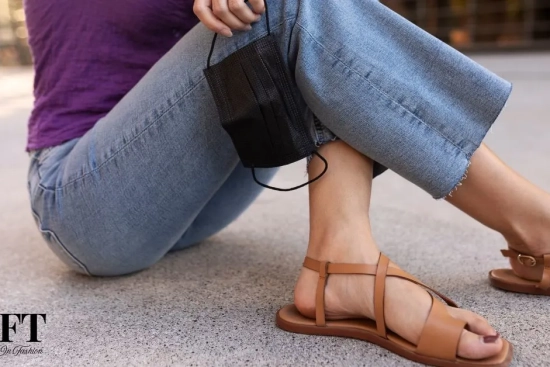
Shopping for clothes online has revolutionized the way we update our wardrobes. With just a few clicks, you can browse thousands of options, compare prices, and have your new outfit delivered to your doorstep. However, the convenience of online shopping comes with its own set of challenges, such as sizing issues, product quality concerns, and the risk of fraudulent websites. This ultimate guide will help you navigate the process of buying clothes online with confidence, ensuring that you make informed decisions every step of the way.
1. Benefits of Shopping for Clothes Online
1.1 Convenience at Its Best
Online shopping saves time and effort. You can shop anytime, anywhere—whether you’re at home, during a commute, or on a lunch break. There’s no need to visit crowded malls or wait in long queues.
1.2 Wider Variety
Online stores often offer a much broader selection than physical stores. From niche brands to global fashion labels, you can find styles, sizes, and designs that suit your unique preferences.
1.3 Price Comparisons
Shopping online allows you to easily compare prices across multiple websites, helping you find the best deals. Many platforms also offer exclusive discounts and promo codes.
1.4 Access to Reviews
Customer reviews and ratings provide valuable insights into product quality, sizing accuracy, and overall satisfaction, enabling you to make informed purchasing decisions.
1.5 Easy Returns and Exchanges
Most reputable online retailers offer hassle-free return and exchange policies, ensuring peace of mind if a product doesn’t meet your expectations.
2. Setting a Budget
Before you start shopping, it’s essential to set a budget. Impulse buying is one of the biggest pitfalls of online shopping, but sticking to a budget helps you focus on what you truly need.
2.1 Identify Your Needs
Assess your wardrobe and determine what you’re missing. Are you looking for seasonal outfits, workwear, or casual clothing? Make a list to avoid unnecessary purchases.
2.2 Track Discounts and Sales
Many online platforms offer regular sales, seasonal discounts, and clearance events. Signing up for newsletters or following brands on social media can help you stay updated.

3. Researching Reliable Online Stores
3.1 Check for Credibility
Always shop from trusted websites. Look for signs of credibility such as secure payment gateways (https://), detailed contact information, and positive customer reviews.
3.2 Explore Customer Reviews
Reviews are a goldmine of information. Look for feedback on product quality, delivery speed, and customer service.
3.3 Return Policies Matter
Understand the store’s return and refund policies before making a purchase. This ensures you’re not stuck with items that don’t meet your expectations.
4. Understanding Sizing and Fit
4.1 Refer to Size Charts
Sizes vary across brands, so always refer to the size chart provided by the retailer. Take accurate measurements of your bust, waist, hips, and inseam for precise sizing.
4.2 Check Fit Descriptions
Many websites include details about how the clothing fits, such as whether it’s true to size, oversized, or slim fit. Use this information to make better choices.
4.3 Read Reviews for Sizing Tips
Customer reviews often mention whether an item runs small or large, giving you additional insight into the fit.
4.4 Consider Tailoring
If you’re between sizes, choose the larger size and consider getting the garment tailored for a perfect fit.
5. Choosing the Right Fabrics
5.1 Understand Fabric Types
Different fabrics have distinct textures, durability, and maintenance requirements. Familiarize yourself with common materials like cotton, polyester, silk, and wool.
5.2 Read Product Descriptions
Product descriptions often include details about the fabric composition. Look for keywords like “breathable,” “stretchy,” or “easy-care” to determine suitability.
5.3 Check for Transparency
Some fabrics, especially lighter ones, may be semi-transparent. Reading reviews or looking at customer-uploaded photos can help you identify potential issues.
6. Examining Product Details
6.1 High-Quality Images
Trustworthy websites provide multiple high-resolution images of each product from various angles. Zoom in to examine stitching, patterns, and other details.
6.2 Look for Additional Information
Check for details like care instructions, lining, closures (zippers or buttons), and additional features like pockets or embellishments.
7. Leveraging Discounts and Deals
7.1 Use Coupon Codes
Search for promo codes before checking out. Websites like RetailMeNot and Honey can help you find active discounts.
7.2 Join Loyalty Programs
Many online retailers offer loyalty programs that provide points, exclusive discounts, or early access to sales.
7.3 Buy Off-Season
Purchasing seasonal items off-season can save you significant money. For example, shop for winter coats in spring or summer dresses in fall.
8. Ensuring Secure Transactions
8.1 Use Secure Payment Methods
Opt for secure payment options like credit cards or trusted payment platforms such as PayPal. Avoid using debit cards on unfamiliar websites.
8.2 Avoid Public Wi-Fi
Shopping online while connected to public Wi-Fi increases the risk of data theft. Use a secure, private network whenever possible.
8.3 Monitor Bank Statements
Regularly check your bank statements for unauthorized transactions, especially after making online purchases.
9. Managing Shipping and Delivery Expectations
9.1 Check Delivery Times
Understand estimated delivery times before placing an order. Some international shipments may take weeks to arrive.
9.2 Track Your Orders
Most retailers provide tracking information once your order has been shipped. Use this to stay updated on your package’s location.
9.3 Opt for Reliable Carriers
Choose retailers that use reputable delivery services to reduce the risk of lost or delayed packages.
10. Handling Returns and Refunds
10.1 Understand the Process
Familiarize yourself with the store’s return policy, including the time frame for returns and the condition the items must be in.
10.2 Keep Original Packaging
Save the original packaging and tags, as these may be required for returns or exchanges.
10.3 Request Refunds Promptly
If you’re unsatisfied with a product, initiate a return or refund request as soon as possible to meet policy deadlines.
Conclusion
Shopping for clothes online ultimate guide, can be a rewarding experience when approached with the right strategies. By understanding your needs, researching reliable stores, and paying close attention to details like sizing, fabrics, and reviews, you can minimize risks and maximize satisfaction. With this ultimate guide, you’re now equipped to shop online confidently and enjoyably, building a wardrobe that perfectly suits your style and budget.








